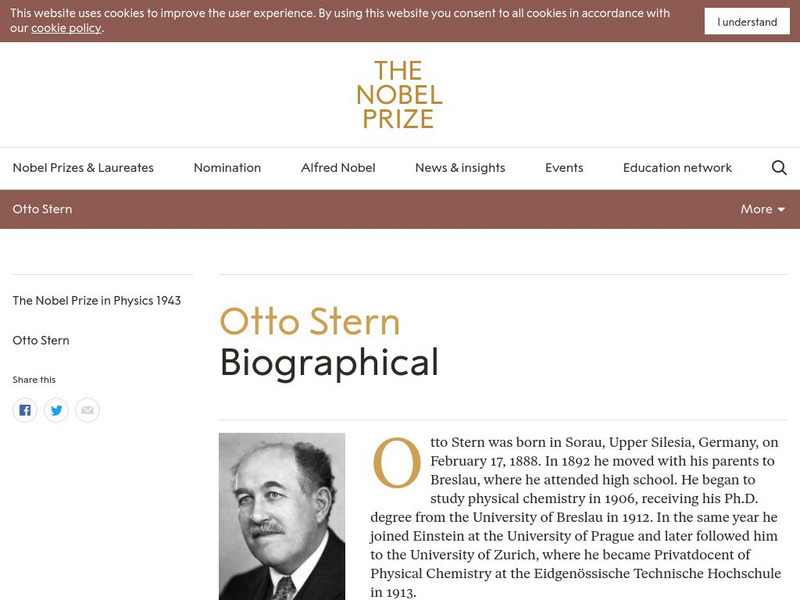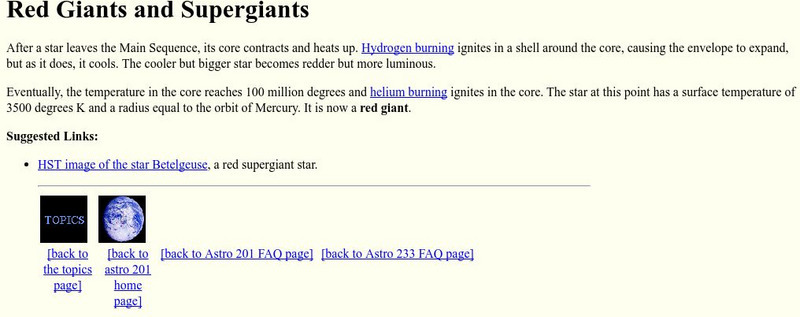Curated OER
Lives of Stars
Students explain in their own words how stars are formed. In this space science lesson, students summarize the life cycle of stars. They draw diagrams and label the step of the cycle they represent.
Curated OER
Gases Around Us
In this gasses worksheet, students write information about hydrogen, oxygen, natural gas, helium, anesthetic gas, and carbon dioxide in pictures of clouds.
Curated OER
Exploring the Solar System
Your students can learn more about our solar system with these lesson plan ideas.
Curated OER
Plasmasphere
In this plasmasphere activity, students determine how long the plasmasphere takes to rotate around the Earth using two satellite images taken three hours apart.
Curated OER
Test Your General Knowledge
In this ESL worksheet, students answer 10 multiple-choice questions about a variety of topics. For example, "What is the highest mountain in the world?"
Curated OER
Saturn
Looking for a good worksheet to help teach about the planet Saturn? This worksheet is for you! An excellent photograph of Saturn accompanies three paragraphs of text. Pupils answer five multiple choice questions based on what they've...
TLS Books
Uranus
After reading an informational text passage, learners answer four multiple choice questions about the third largest planet in our solar system.
NASA
A Different Perspective
What can we learn from the data? Young scholars analyze actual solar data to answer specific questions. The activity presents an opportunity for an open-ended investigation of the data to conclude a five-part series on solar winds.
Curated OER
A Stellar Review
In this science worksheet, students find the answers to the vocabulary matching activity. Then they fill in the boxes with the correct words.
Curated OER
GCSE Science-CHEMISTRY worksheet on THE NOBLE GASES - Group 0 of the Periodic Table
In this periodic table learning exercise students complete a fill in the interactive set of questions using a set of vocabulary words that describe the different elements.
Curated OER
Space: The Universe As We Know It!
Students simulate the Big Bang. In this lesson on the origin of our universe, students role play to show how the Big Bang explosion may have created our universe.
Curated OER
The Sun
In this science worksheet, learners answer 4 questions about the sun. Students also circle the sun spots on an illustration of the stun.
Curated OER
The Life Cycle of a Star
In this stars worksheet, students read about the different stages in the life cycle of a star. Then students complete 3 short answer questions.
Curated OER
Gas Law Worksheet II
For this gas laws worksheet, students calculate volume, pressure, or mass for given gas reactions. Students calculate partial pressures for given gases. This worksheet has 17 problems to solve.
Curated OER
ESL-Common Chemical Elements
In this ESL common chemical elements worksheet, learners select the chemical elements represented by symbols given. Students may click on an answer button for immediate feedback.
Curated OER
Review for Chemistry
In this review for chemistry worksheet, students decide if given statements are true or false. Students relate information learned about introductory knowledge gained in chemistry to accurately answer the given questions.
Curated OER
Fun with Balloons
Fifth graders design their own hot air balloon. In this science lesson, 5th graders investigate how factors like weight and sizes affect a balloon's lifting power. They also write math problems based on facts written in the...
Curated OER
Constructing a Spectroscope
Pupils construct a simple spectroscope. They observe the emission spectrum produce by a source of light.
Dartmouth College
Dartmouth College: Chem Lab: Spectrum of the Hydrogen Atom
In this experiment, you will use a meterstick spectroscope to observe the emission spectrums of hydrogen, sodium, neon, helium, and mercury. Requires Java plug-in.
Nobel Media AB
The Nobel Prize: Otto Stern Biographical
This is a brief biography on the life and scientific work of Otto Stern, a physicist honored with the Nobel Prize in physics for his "development of the molecular ray method and his discovery of the magnetic moment of the proton."
Khan Academy
Khan Academy: Infographic: Chemical Abundances: The Sun
Did you know our sun in composed of mainly hydrogen and helium? This infograph reviews over all the chemicals that can be found in our sun.
Science4Fun
Science4 Fun: Helium
Fun and interesting information about Helium, the 2nd lightest gas after Hydrogen. Learn about its characteristics, uses, where it is found, and discovery.
Cornell University
Cornell University: Astronomy: Red Giants
This Cornell University Astronomy Department site surveys the the hydrogen and helium burning that takes place in the evolution of a red giant. Links to related information.
Concord Consortium
Concord Consortium: Nonbonding
Bring two molecules together and observe potential energy changes.





















